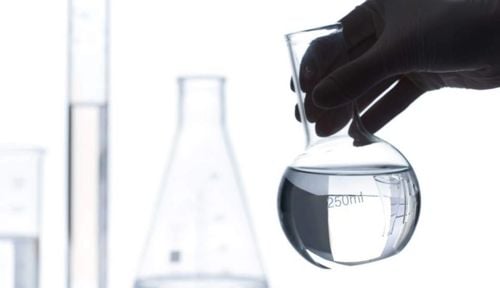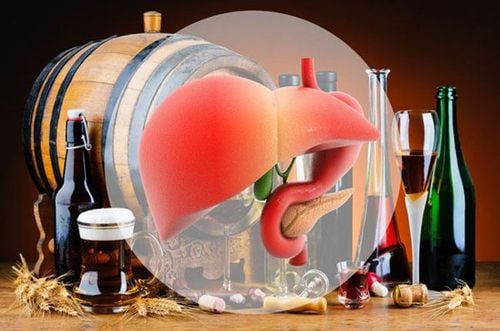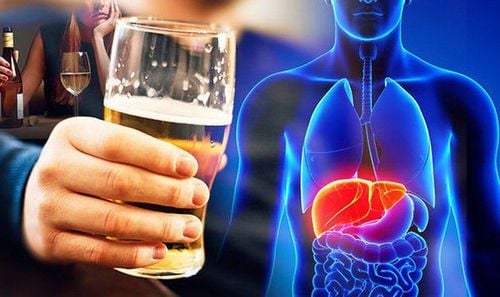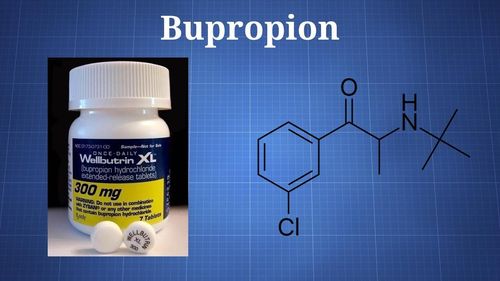This is an automatically translated article.
This article is expertly consulted by Master, Doctor Nguyen Le Duc Hoang - Emergency Medicine Doctor - Emergency Department - Vinmec Danang International Hospital.Methanol, commonly known as industrial alcohol, has many different uses: making paints, solvents ..., but this substance is very toxic to the body and absolutely cannot be used as food alcohol like ethanol.
Methanol is rapidly and completely absorbed from the gastrointestinal tract, volume of distribution 0.7 L/kg, not bound to plasma proteins. Much of it is metabolized by the liver, but slowly. The parent substance, methanol itself, acts like ethanol ("drunk-like" manifestations), but then methanol is converted to formic acid, then to formate, causing metabolic acidosis, toxicity to organs, especially the nervous system. nerve and vision. When ethanol and methanol are present in drinking alcohol, the toxic metabolism of methanol appears to be slower and the manifestation of intoxication is late, patients and physicians may only notice ethanol-type poisoning at first and easily miss the stage. Actual subsequent poisoning of methanol. Methanol poisoning is often severe, easy to die if not detected in time and treated aggressively.
1. How does alcohol containing methanol cause poisoning?
When drinking alcohol mixed with industrial methanol, this substance will be easily absorbed through the intestines and skin into the lungs. Methanol in the body will reach peak plasma concentrations after only 30-60 minutes. The liver takes a long time to metabolize this chemical. About 3% of the amount of methanol taken into the body is eliminated via the lungs or unchanged in the urine.
Industrial methanol alcohol will be oxidized to form formaldehyde in the body. Formaldehyde is then further oxidized to form formic acid - ant acid, the main component of ant venom. New formic acid is considered to be the toxic culprit in cases of methanol poisoning. And to be eliminated through the lungs and kidneys, formic acid will be converted into CO2 and water. Formaldehyde is converted to formic acid and this oxidation occurs rapidly, so formic acid will accumulate in the serum, causing toxicity and metabolic acidosis. When formic acid accumulates in the retina causing damage to the retina, damage to the optic nerve, leading to blindness. Not only that, the case of formic acid reaching the brain will cause damage and can lead to death.
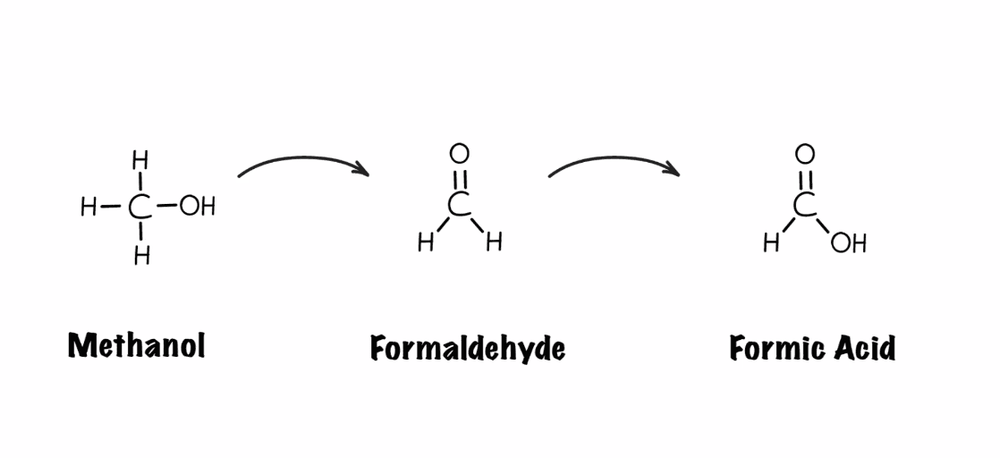
Quá trình chuyển hóa methanol
2. Symptoms of methanol alcohol poisoning
Symptoms of toxicity usually appear within 30 minutes after ingestion but may be later, depending on the amount and whether the patient has taken ethanol or not (if symptoms appear more slowly). There are usually two phases, a subtle phase (first few hours to 30 hours) and an apparent toxicity phase that follows. Because symptoms are often subtle and mild at first (slight neuroleptic depression, sedation, analgesia) they are often overlooked or undetected in young children. Common manifestations are:
Nervous: methanol is a central nervous system depressant, similar to ethanol poisoning but at a milder level, causing sedation and apathy. Patients when coming to the hospital are usually awake but very headache, dizziness, then may experience the following symptoms: forgetfulness, restlessness, mania, lethargy, confusion, coma, convulsions. When the poisoning is severe, there may be hemorrhage or infarction of the duckweed, brain drop. Eyes: At first, normal vision, then 12-24 hours blurred vision, double vision, feeling like there are clouds in front of the eyes, photophobia, opacity, eye pain, double vision, central opacity, narrowing of vision field, reduced or lost vision, visual hallucinations (glare lights, dancing dots, tunnel vision...). A pupil that is poorly responsive to light or fixed dilated is a sign of severe toxicity and a poor prognosis. Ophthalmoscopy showed congestive papilledema, then retinal edema spreading along the blood vessels to the center of the fundus, blood vessels congested, papilledema, retinal hemorrhage. The signs seen on ophthalmoscopy do not correlate with the patient's visual findings but do correlate with the severity of the poisoning. Neurological sequelae: confusion, coma, parkinson's syndrome, cognitive deficits, transverse myelitis, polyneuropathy, optic disc atrophy, pseudo-oculomotor paralysis. Cardiovascular: vasodilation, hypotension and heart failure. Respiratory: weak breathing, stop breathing; Rapid, deep breathing if metabolic acidosis is present. Gastrointestinal: hemorrhagic gastritis, acute pancreatitis with epigastric pain, vomiting, diarrhea. Moderate or severe poisoning may alter liver function. Renal: acute renal failure, presenting with oligouria, anuria, red or dark urine if rhabdomyolysis is present. There may be back pain, trunk pain, stiff neck (like meningeal hemorrhage), muscle stiffness, skin may be cold, sweaty.

Một số triệu chứng của ngộ độc cồn methanol
3. Diagnostic tests for methanol alcohol poisoning
3.1 General test
Make an arterial blood gas test : Immediately after a person drinks alcohol containing methanol, there are signs of intoxication and severe metabolic acidosis, non-ketogenic and lactic acidosis; Do ionization test : Helps to calculate the anion gap; Osmotic gap measurement (ALTT) = measured ALTT - estimated ALTT [estimated ALTT = 2Na + Urea (mmol/l) + Glucose (mmol/l)]; Test for blood and urine ketones : Help to rule out other diagnoses (diabetic ketoacidosis, alcohol, long fasting); Measure the concentration of ethanol, methanol, ethylene glycol in the blood; CT scan and brain MRI to detect edematous lesions and necrosis of the basal ganglia, especially the putamen region. These signs may explain a complication of methanol poisoning that, if saved, can lead to Parkinson's syndrome with the following manifestations: rigidity, mild myoclonic tremor, slow movement, lethargy or insanity, mild dementia .

Chụp MRI não giúp chẩn đoán ngộ độc cồn methanol
3.2. Methanol Assay
Direct measurement of methanol by gas chromatography. If the concentration is > 20 mg/dL, it is poisoning, if it is > 40 mg/dL, it is very serious poisoning.
4. Treatment of industrial methanol alcohol poisoning
4.1. Basic treatment measures
Deep coma, convulsions, sputum stagnation, tongue drop, respiratory failure, weak breathing, respiratory arrest: lying on your side, placing mouth canun, sucking sputum, breathing oxygen, intubating tracheal, mechanical ventilation with hyperventilation (depending on the level). Low blood pressure: intravenous fluids, vasopressors if necessary. Nutrition: 10-20% glucose infusion if hypoglycaemia, (hypertonic glucose infusion for energy), 25-50 g sugar can be bolus immediately, 50-100 mL 50% glucose remover if initial hypoglycaemia. Vitamin B1 IM 100-300mg (adults) or 50mg (children), before glucose infusion. Profuse vomiting: inject antiemetics, take drugs to coat the stomach lining, inject drugs to reduce gastric secretion, rehydrate electrolytes by intravenous infusion. Rhabdomyolysis: administer fluids according to CVP, balance electrolytes, ensure urine 150-200 mL/hour. Hypothermia: warm up. Note the detection and treatment of injuries and other complications. 4.2. Detoxification treatment and increased toxicity:
Insert a gastric tube and suction if the patient arrives within 1 hour and the patient vomits sparingly. Patients arriving later but taking large quantities can still be considered smoking. Increase excretion of toxins: Ensure urine flow: ensure blood pressure and patient is not dehydrated, increase urine flow, intravenous injection, adult total dose up to 1 g/day, pediatric dose 0 ,5-1.5mg/kg/day. Body hemodialysis: decisive. Indications: patients diagnosed with methanol poisoning have: blood methanol concentration > 50mg/dL or ALTT gap > 10mOsm/kg. The acidosis is well-metabolized regardless of the methanol concentration. The patient has visual disturbances. Renal failure unresponsive to routine treatment. Methanol poisoning in alcoholics regardless of blood methanol concentration. Dialysis method: Hemodialysis (artificial kidney): for hemodynamically stable patients (normal blood pressure, no severe heart failure). There may be a phenomenon of methanol redistribution from the tissues back into the blood, so it is necessary to monitor the ALTT gap, blood gas, and methanol concentration immediately after filtration to consider the indication for further filtration. Continuous hemodialysis: applied to hemodynamically unstable patients, continuous filtration avoids methanol redistribution until methanol is negative and blood gas is normal.
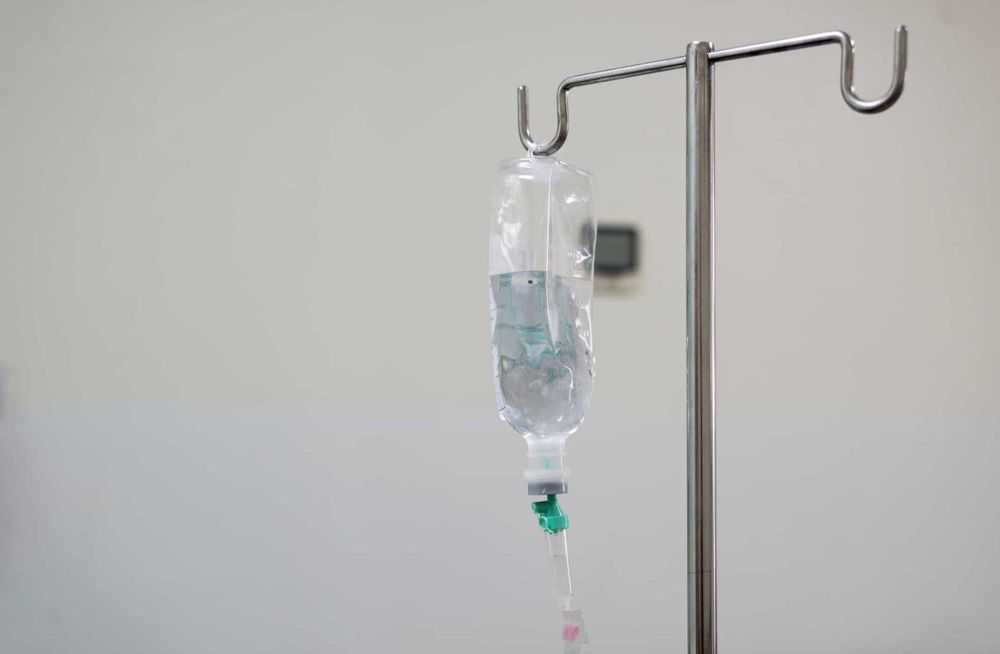
Sodium bicarbonate được sử dụng khi độ pH máu dưới 7
Ethanol and fomepizole (4-methylpyrazole): prevent methanol from being converted into toxic substances (formic acid and formate), free methanol will be eliminated from the body by the kidneys or by dialysis. When these drugs are discontinued or inadequately administered and the patient is not on dialysis, methanol continues to be metabolized and is toxic.
4.3.1. Indications:
History of methanol ingestion, and ALTT gap >10 mOsm/kg in the absence of concentration test results.
Methanol concentration > 20mg/dL.
History of suspected methanol poisoning and at least 2 of the following criteria: pH < 7.3; HCO3<20mmHg; ALTT gap >10mOsm/kg.
Metabolic acidosis of unknown cause and ALTT gap >10mOsm/kg. Ethanol or fomedizole should be used in patients who will be and are undergoing ongoing hemodialysis or pending hemodialysis to prevent further toxic metabolism of methanol while it is not eliminated from the body. .
4.3.2. Drugs used:
Ethanol is effective, inexpensive but has some side effects (CNS effects, hypoglycemia, electrolyte disturbances. Intravenous ethanol preparations are easier to use for patients, easy to follow, and Monitor and adjust dose than oral ethanol
Fomepizole is effective, easy to use and monitor, but very expensive
How to take oral ethanol:
Type of ethanol used: oral alcohol, product is safe and labeled clear alcohol content (%).
Method of preparation: mix into alcohol with a concentration of 20% (1ml contains 0.16 grams of ethanol) + Initial dose: 800 mg/kg (4ml/kg), drink (can be mixed with sugar). or juice) or by nasogastric drip
Maintenance dose: Non-alcoholics: 80 - 130 mg/kg/hour (0.4 to 0.7ml/kg/hour), in alcoholics: 150 mg/kg/hour (0.8 mL/kg/h), orally or via nasogastric tube
Maintenance dose during and after dialysis: 250 to 350 mg/kg/hour (1.3 to 1, 8 mL/kg/hour), orally or through a nasogastric tube
Monitor:
Blood ethanol concentration (if possible), maintain 100-150mg/dL
Monitor consciousness, vomiting, medication, respiratory status, pulse, blood pressure, blood sugar, blood electrolytes. Manage complications and ensure that the patient is provided with adequate glucose, especially in children.
Discontinue ethanol when the following criteria are met:
Blood osmolarity gap returns to normal or blood methanol concentration <10m/dL.
Metabolic acidosis as described above and clinical (especially CNS) improved.
4.3.3. Support drug
Folic acid or leucovorin, promoting the body's detoxification process (formic acid and formic acid metabolism), 1-2mg/kg/time, used 4-6 hours/time, in dialysis patients use extra 1 dose before and 1 dose at the end of dialysis. Sodium bicarbonate: for metabolic acidosis, dose 1-2mEq/kg for both children and adults, adjusted to pH >7.25.
Customers can directly go to Vinmec International General Hospital nationwide for examination or contact the hotline HERE for support.
SEE ALSO:
Delirium: Dangerous disease Why is cirrhosis common in people who drink alcohol? Why do people who often drink alcohol need to be screened for liver cancer?







